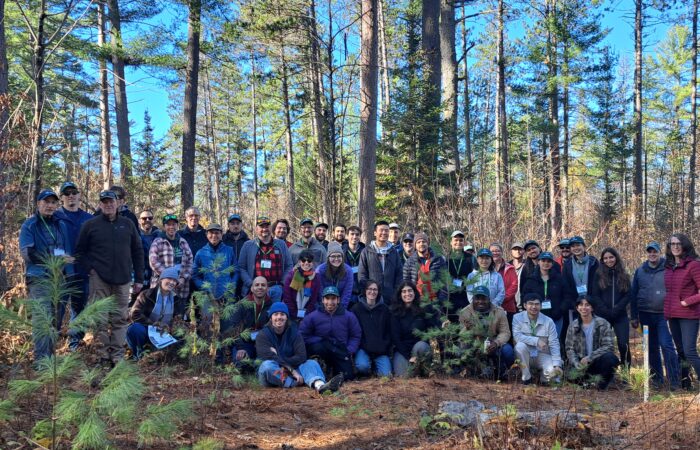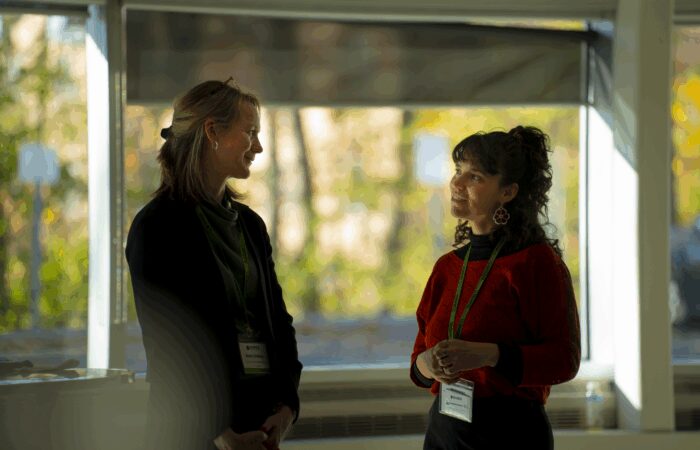As Zoé is coming back from France, where she was conducting some analysis for the DIVERSE project, we got in touch with her to know all about her, what she’s doing in DIVERSE and how was her summer!

Q: First of all, before we dive in your research, could you tell us where are you from?
Zoé: I come from a small village in the Jura region of Franche-Comté. It’s quite a coincidence, because this region is one of the most forested in France, and the landscapes are similar to those in Quebec.
Q: When did you start on the DIVERSE project?
Zoé: I started working on the DIVERSE project in February 2025.
Q: What about the DIVERSE project intrigues you or gets you excited?
Zoé: What I like most about DIVERSE is the collaborative and multidisciplinary aspects. It’s great to be able to benefit from everyone’s expertise and to get the point of view of people with a wide range of theoretical and practical knowledge.
Q: What is your educational background, and what led you to what you are studying now?
Zoé: I graduated with a license – equivalent to a Bachelors – in Biology and Ecology from Besançon University (France). I then completed a master’s degree in Ecophysiology and Ecotoxicology at Sorbonne Université in Paris, specializing in the ecophysiology of plants under hydraulic stress. After that, I completed my PhD at ISFORT, UQO (Québec), where I studied the effects of drought on sugar maples and white spruces at ecophysiological and transcriptomic scales. I’ve also had the opportunity to work in the field of epigenetics, writing a review on epigenetics in forest trees with international collaborators. This background has given me a multidisciplinary research profile, allowing me to understand processes from molecular to individual scales.

Q: Tell us all about your research!
Zoé: My research project is part of theme 1 in Diverse. Morgane Urli and Audrey Maheu are my supervisors. I am working on clarifying the relationships between hydraulic traits, such as maximal conductivity and cavitation vulnerability, and the wood density of three deciduous tree species. The work also aims to elucidate the role of climatic factors, such as soil water availability, in the variation of the target hydraulic and wood traits. The project will also contribute to enhancing the Diverse TOPIC database. A better understanding of the relationships between these traits and the influence of climate will improve the monitoring of species in the context of climate change and inform the use of these traits in modelling.
Q: What issues in forestry “keep you up at night” ?
Zoé: Even if I’m not working on this topic specifically, the increase of forest fires in Canada in the recent years is a subject that concerns me greatly. As a forest ecologist and a citizen, I aim to work on this issue
Q: Do you have a favorite tree species?
Zoé: I love balsam fir because of its lovely-smelling sap. But what could be cuter than a young larch tree starting to bud?
Q: How has your time with DIVERSE been thus far?
Zoé: I saw my first wild bear during the field season! It was a mummy bear and her two cubs. What a great moment! I also had the chance to collaborate with the team of Sylvain Delzon at INRAE of Bordeaux, France, this summer to perform hydraulics measurements using the cavitron method. It was great to learn a new technique.
Q. Could you explain the method you used in France?
Zoé : The cavitron method is a way to measure vulnerability to tree cavitation. You need to gradually increase the centrifugal force to create a tension in the water column of the branch, which mimics the effect of drought. A branch is cut to fit into the rotor of a modified centrifuge (see photos), and each side of the branch is disposed into a cup of water. The rotation induces water flow inside the branch from basal to distal side. A camera follows the water as it drains away from the basal cup. The water flow allows to calculate the maximal conductivity of the branch and the value of the water potential that causes 50% conductivity loss.


Q: To finish smoothly, what is a hobby you love doing?
Zoé: When I was young, I loved climbing trees and playing in the forest. In fact, I still love it, but I don’t get the chance to do it as much.
You can also see Zoé’s HQP website profile here. Stay tuned for more HQP spotlights throughout the course of the project!



